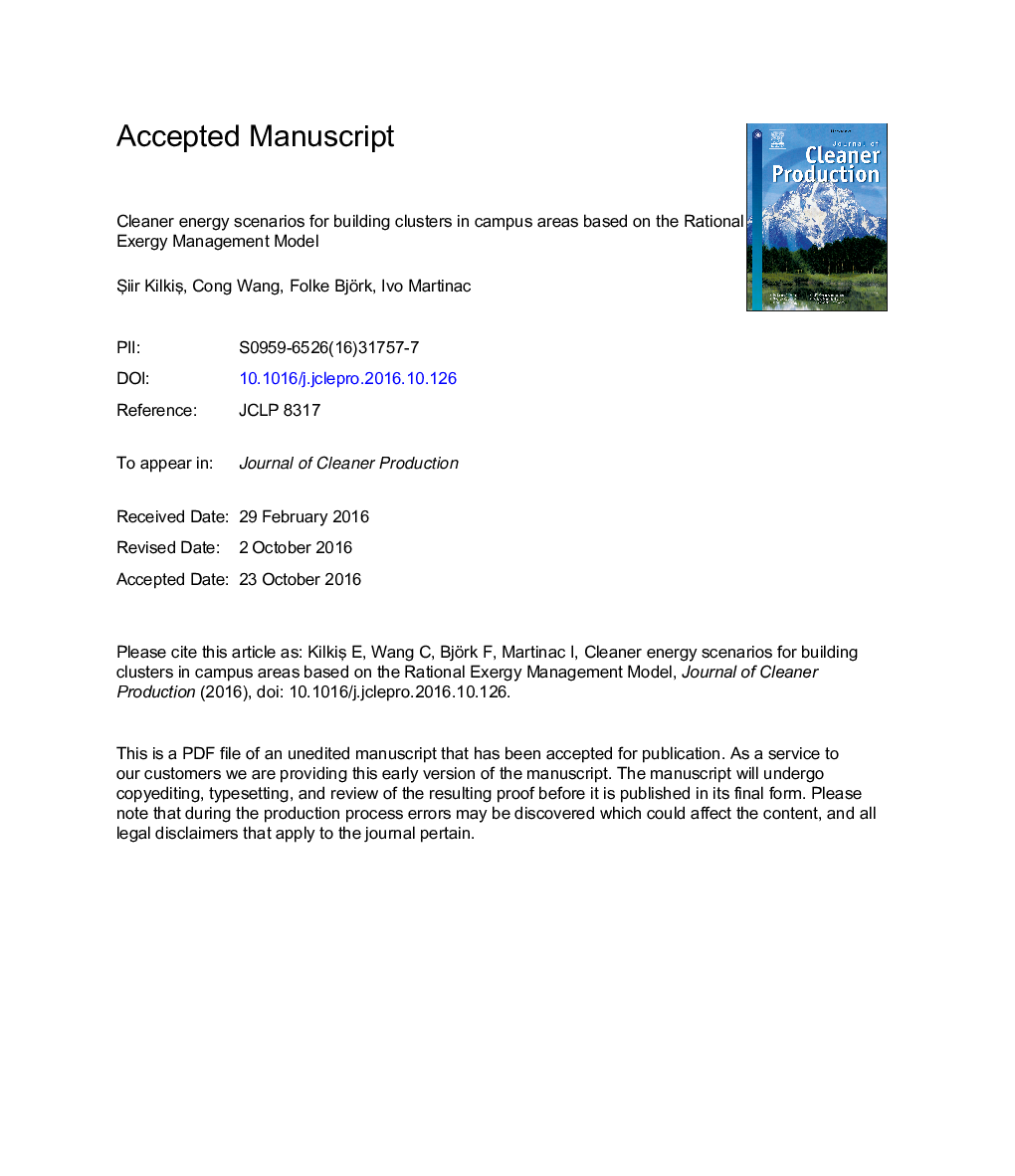| Article ID | Journal | Published Year | Pages | File Type |
|---|---|---|---|---|
| 5479693 | Journal of Cleaner Production | 2017 | 45 Pages |
Abstract
Principles based on the quality of energy, namely exergy, can assist in attaining a more efficient and cleaner energy supply structure. This paper analyzes two building clusters in campus areas based on a stepwise approach with four steps according to the Rational Exergy Management Model. The clusters involve 8 buildings at the KTH Royal Institute of Technology and those in the Albano district that is a former industrial site and will become a joint campus area in Stockholm. The energy supply for the campus and urban vicinity includes a combined heat and power plant with district heating and cooling. In this context, the energy and exergy profiles of the building clusters are compared. The level of exergy match in the energy system is analyzed. Four scenarios are then devised, which involve energy savings and different shares of various supply options. These include a new biofuel unit, seawater heat pumps, large scale aquifer thermal energy storage, heat supply from solar collectors, and electricity and heat from photovoltaic thermal arrays. The present case and four scenarios are found to have exergy matches that range between 0.49 and 0.81. The scenarios indicate that savings of 16Â GWh energy, 9.6Â GWh exergy, and 2663 tonnes of carbon dioxide emissions are possible. The paper contributes to exergy based analyzes for campus areas and concludes with the prospect of using campus areas as pioneering case studies for advancing the transition to cleaner energy scenarios.
Related Topics
Physical Sciences and Engineering
Energy
Renewable Energy, Sustainability and the Environment
Authors
Åiir KılkıÅ, Cong Wang, Folke Björk, Ivo Martinac,
